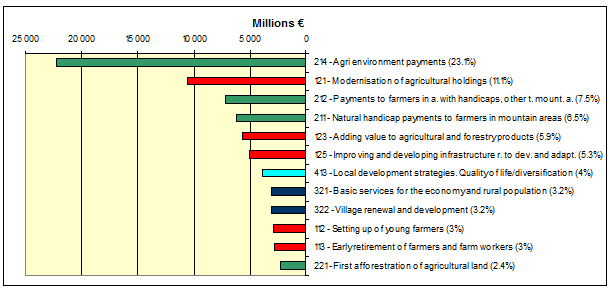Are we as taxpayers getting good value for money from agri-environment payments under the EU’s rural development (RD) policy? This is an important question, given that agri-environment payments will amount to around €22 billion during the 2007-2013 RD programming period, alone accounting for around 23% of all Pillar 2 spending. It becomes more important given that the Commission is flagging that it wants to direct even more funding towards the provision of environmental public goods in the next programming period.
 Breakdown EU Rural Development spending 2007-2013
Breakdown EU Rural Development spending 2007-2013A European Court of Auditors report published last Monday (September 19) provides a rather critical response to this question.… Read the rest

 …
…